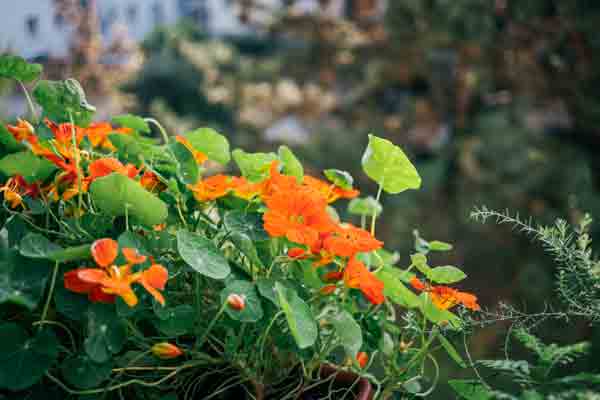Nasturtium companion plants offer a myriad of benefits to you, enhancing the health and productivity of a garden. When you plant nasturtiums alongside other vegetables and herbs, they provide natural pest control by repelling harmful insects and attracting beneficial ones. This environmentally friendly method decreases reliance on chemical pesticides, promoting a healthier garden environment. Additionally, nasturtium companion plants can improve the flavor and growth of nearby crops, making them an invaluable addition to any garden. You can create a thriving, productive, and beautiful garden space by carefully selecting and pairing nasturtiums with compatible plants.
Best Nasturtium companion plants
Potatoes
Nasturtiums are excellent companions for potatoes. They help repel Colorado potato beetles and other potato pests, ensuring healthier plants and better yields.
Benefits:
- Pest Repellent: Nasturtiums deter Colorado potato beetles.
- Healthier Plants: Fewer pests result in stronger, healthier potato plants.
- Better Harvest: Healthy plants produce more and higher-quality potatoes.
Considerations:
- Spacing: Ensure adequate space between nasturtiums and potatoes for optimal growth.
- Watering: Both plants require consistent watering, but waterlogged conditions are avoided.
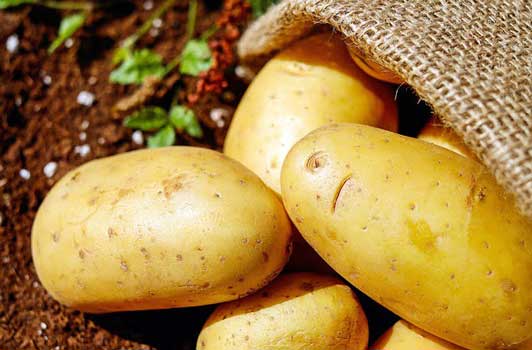
Lettuce
Nasturtiums help deter aphids and improve the flavor of lettuce. This pairing promotes healthier and tastier lettuce.
Benefits:
- Pest Control: Nasturtiums keep aphids away from lettuce.
- Flavor Improvement: Lettuce grown near nasturtiums can taste better.
- Healthier Plants: Reduced pest pressure leads to stronger lettuce.
Considerations:
- Planting Density: Avoid overcrowding to ensure both plants receive enough light and air.
- Watering Needs: Both plants enjoy regular watering but ensure proper drainage.
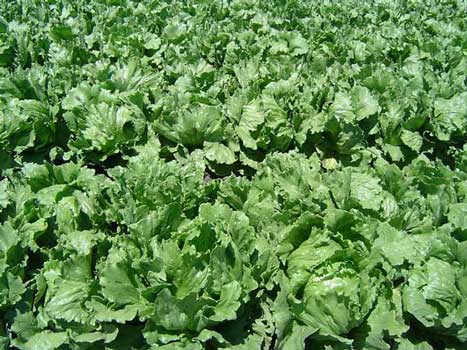
Spinach
Nasturtiums attract beneficial insects that help protect spinach from pests. This natural pest control method ensures healthier spinach plants.
Benefits:
- Beneficial Insects: Nasturtiums attract insects that prey on spinach pests.
- Healthier Plants: Fewer pests mean stronger spinach.
- Better Yield: Healthier plants produce more spinach leaves.
Considerations:
- Sunlight: Ensure both plants receive adequate sunlight for optimal growth.
- Watering: Both plants need regular watering, but avoid over-saturating the soil.

Carrots
Nasturtiums can improve carrot growth and deter pests like carrot flies. This combination promotes healthier and more productive carrot plants.
Benefits:
- Pest Deterrent: Nasturtiums keep carrot flies and other pests away.
- Growth Improvement: Carrots grow better when nasturtiums are nearby.
- Increased Yield: Healthier plants produce more carrots.
Considerations:
- Root Space: Ensure enough space for carrot roots to grow without competition.
- Soil Quality: Both plants thrive in well-draining, nutrient-rich soil.
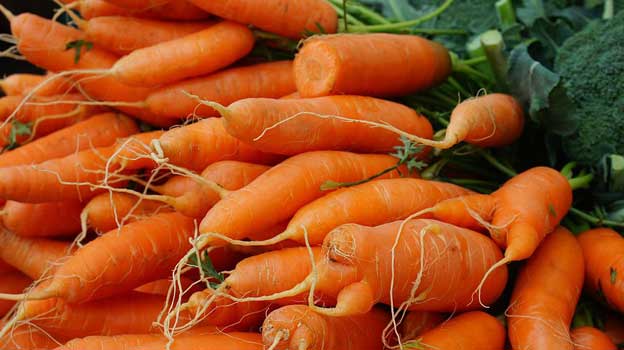
Melons
Nasturtiums repel pests like aphids and squash bugs, making them excellent companions for melons. This pairing ensures healthier plants and better yields.
Benefits:
- Pest Repellent: Nasturtiums deter aphids and squash bugs.
- Healthier Plants: Reduced pest pressure leads to stronger melon plants.
- Better Harvest: Healthier plants produce more melons.
Considerations:
- Spacing: Provide enough room for both plants to spread and thrive.
- Support: Use trellises or supports for vining melons to maximize space.

Pumpkins
Nasturtiums attract pollinators and repel pests, making them ideal companions for pumpkins. This combination ensures better pollination and fewer pest issues.
Benefits:
- Pollinator Attraction: Nasturtiums draw in bees and other pollinators.
- Pest Repellent: Nasturtiums deter pests from pumpkins.
- Better Yield: Improved pollination and pest control lead to more pumpkins.
Considerations:
- Growth Space: Ensure adequate space for both plants to grow without overcrowding.
- Sunlight: Both plants require full sun for optimal growth.

Strawberries
Nasturtiums help deter pests and can improve the flavor of strawberries. This pairing promotes healthier and tastier strawberries.
Benefits:
- Pest Control: Nasturtiums keep pests away from strawberries.
- Flavor Improvement: Strawberries grown with nasturtiums can taste better.
- Healthier Plants: Reduced pest pressure leads to stronger strawberry plants.
Considerations:
- Planting Distance: Avoid overcrowding to ensure both plants receive enough light and air.
- Watering Needs: Both plants enjoy regular watering but ensure proper drainage.

Brussels Sprouts
Nasturtiums keep common pests away from Brussels sprouts, ensuring healthier plants and better yields.
Benefits:
- Pest Repellent: Nasturtiums deter common pests of Brussels sprouts.
- Healthier Plants: Fewer pests result in stronger Brussels sprouts.
- Better Harvest: Healthier plants produce more Brussels sprouts.
Considerations:
- Spacing: Provide enough room for both plants to grow and thrive.
- Soil Quality: Both plants benefit from nutrient-rich, well-draining soil.
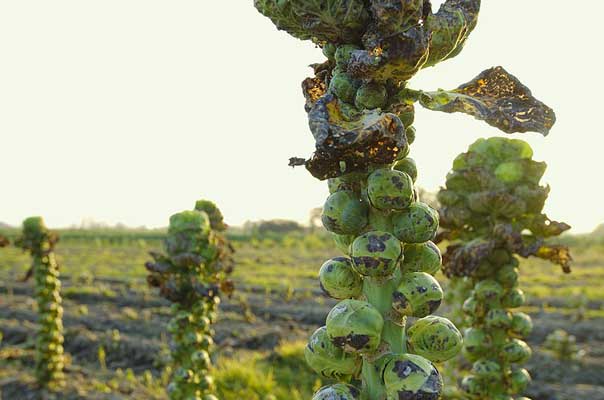
Marigolds
When planted together, nasturtiums and marigolds create a pest-repelling solid combination. This pairing helps protect a variety of garden plants from pests.
Benefits:
- Pest Control: Both plants repel different types of pests.
- Healthier Garden: Reduced pest pressure leads to healthier plants overall.
- Attractive Garden: Both plants add vibrant colors to the garden.
Considerations:
- Planting Layout: Strategically place marigolds and nasturtiums around the garden for maximum pest control.
- Maintenance: Both plants require similar care, making them easy to grow together.

Tomatoes
Nasturtium and tomatoes are excellent companions for tomatoes. They help repel aphids, whiteflies, and other pests that target tomatoes. You can enjoy healthier plants and abundant harvests by ng nasturtiums near your tomatoes.
Benefits:
- Pest Repellent: Nasturtiums keep harmful insects away from tomatoes.
- Improved Health: Fewer pests mean stronger, healthier tomato plants.
- Better Harvest: Healthier plants lead to more tomatoes.
Considerations:
- Space: Ensure enough space between plants to allow for airflow and growth.
- Watering: Both tomatoes and nasturtiums enjoy consistent watering but avoid waterlogging.
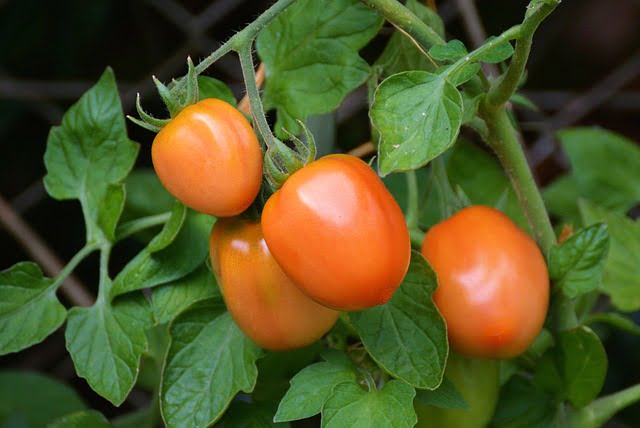
Cucumbers
Nasturtiums and cucumbers make a great team in the garden. Nasturtiums deter cucumber beetles and improve cucumber growth, leading to healthier plants and better yields.
Benefits:
- Pest Control: Nasturtiums keep cucumber beetles at bay.
- Growth Improvement: Cucumbers grow better with nasturtiums nearby.
- Increased Yield: Healthier plants produce more cucumbers.
Considerations:
- Vining Habits: Both plants may vine, so provide proper support and space.
- Sunlight: Ensure both plants receive ample sunlight for optimal growth.
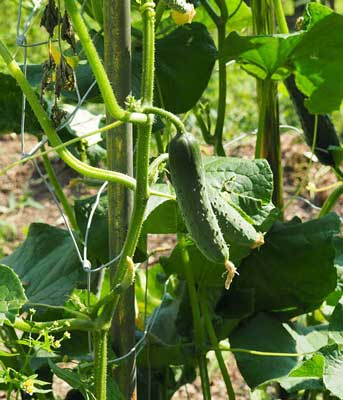
Squash
Nasturtiums attract pollinators and repel squash bugs, making them ideal companions for squash plants. This combination ensures better pollination and fewer pest issues.
Benefits:
- Pollinator Attraction: Nasturtiums draw in bees and other pollinators.
- Pest Repellent: Squash bugs are deterred by nasturtiums.
- Better Harvest: Improved pollination leads to more squash.
Considerations:
- Spacing: Give both plants enough room to spread and thrive.
- Support: Use trellises or supports for vining varieties to maximize space.

Radishes
Planting nasturtiums near radishes can help keep pests away and improve radish flavor. This combination promotes a healthier and tastier radish crop.
Benefits:
- Pest Deterrent: Nasturtiums keep radish pests at bay.
- Flavor Enhancement: Radishes grown with nasturtiums can taste better.
- Healthier Plants: Fewer pests mean stronger radish plants.
Considerations:
- Quick Growth: Radishes grow quickly, so plan succession planting with nasturtiums.
- Watering: Ensure both plants receive adequate water without over-saturating the soil.

Peas
Nasturtiums and peas grow well together. Nasturtiums can deter aphids and other common pea pests, leading to healthier pea plants and better yields.
Benefits:
- Pest Control: Nasturtiums repel aphids and other pests.
- Healthier Peas: Reduced pest pressure leads to stronger pea plants.
- Increased Yield: Healthier plants produce more peas.
Considerations:
- Climbing Support: Provide trellises for peas to climb, ensuring nasturtiums don’t overshadow them.
- Soil Health: Both plants benefit from nutrient-rich, well-draining soil.
Read About: Companion Plants For Peas

Beans
Nasturtiums attract beneficial insects that help protect beans from pests. This natural pest control method keeps your bean plants healthy and productive.
Benefits:
- Beneficial Insects: Nasturtiums attract insects that prey on bean pests.
- Healthier Plants: Fewer pests mean stronger, healthier beans.
- Better Harvest: Healthier plants lead to more beans.
Considerations:
- Growth Habits: Ensure beans have support to climb, allowing nasturtiums to spread below.
- Watering Needs: Both plants enjoy regular watering but avoid waterlogged conditions.
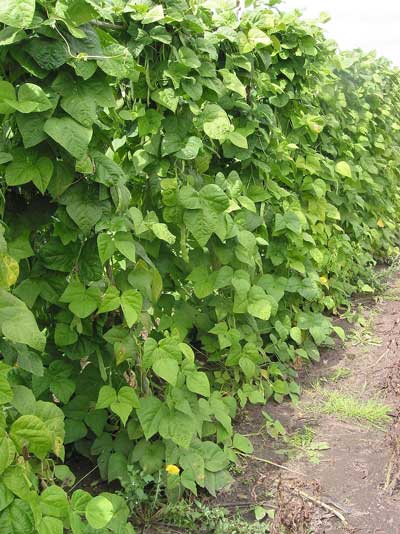
Broccoli
Nasturtiums and broccoli are a great combination. Nasturtiums repel cabbage moths and other pests that target brassicas, ensuring healthier broccoli plants.
Benefits:
- Pest Repellent: Nasturtiums deter cabbage moths and other pests.
- Healthier Plants: Reduced pest pressure leads to stronger broccoli.
- Better Yield: Healthier plants produce more broccoli.
Considerations:
- Spacing: Provide enough space for both plants to grow without competition.
- Soil Quality: Both plants thrive in nutrient-rich, well-draining soil.

Cabbage
Nasturtiums deter cabbage worms and other common cabbage pests. Planting nasturtiums near cabbage ensures healthier plants and improved harvests.
Benefits:
- Pest Control: Nasturtiums repel cabbage worms and other pests.
- Healthier Cabbage: Fewer pests mean stronger cabbage plants.
- Better Harvest: Healthier plants lead to more cabbage heads.
Considerations:
- Planting Distance: Ensure adequate spacing to prevent overcrowding.
- Sunlight: Both plants require full sun for optimal growth.
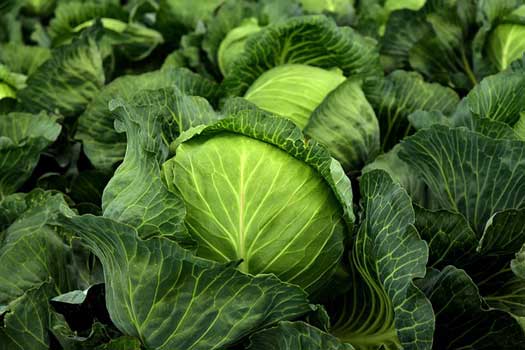
Cauliflower
Nasturtiums help repel pests like broccoli and cabbage, making them excellent companions for cauliflower. This pairing ensures healthier and more productive cauliflower plants.
Benefits:
- Pest Deterrent: Nasturtiums keep cauliflower pests at bay.
- Healthier Plants: Reduced pest pressure leads to stronger cauliflower.
- Increased Yield: Healthier plants produce more cauliflower.
Considerations:
- Growth Space: Provide enough room for both plants to grow and thrive.
- Watering: Ensure consistent watering without waterlogging the soil.

Kale
Nasturtiums keep aphids and other pests away from kale, ensuring healthier plants and better yields. This combination is especially effective for organic gardening.
Benefits:
- Pest Control: Nasturtiums repel aphids and other kale pests.
- Healthier Kale: Fewer pests mean stronger kale plants.
- Better Harvest: Healthier plants lead to more kale leaves.
Considerations:
- Planting Density: Avoid overcrowding to ensure proper growth for both plants.
- Nutrient Needs: Both plants thrive in nutrient-rich, well-draining soil.

Basil
Nasturtiums and basil are excellent garden companions. Nasturtiums attract beneficial insects that help protect basil from pests while enhancing the garden’s overall health.
Benefits:
- Pest Control: Nasturtiums attract beneficial insects that prey on basil pests.
- Healthier Plants: Reduced pest pressure results in stronger basil plants.
- Flavor Enhancement: Basil grown near nasturtiums can have enhanced flavor due to the improved health of the plants.
Considerations:
- Spacing: Ensure adequate space between nasturtiums and basil for optimal growth.
- Sunlight: Both plants require full sun for best growth and flavor.

Oregano
Nasturtiums and oregano make a great pair in the garden. Nasturtiums attract pollinators and beneficial insects that help protect oregano, promoting healthier and more robust plants.
Benefits:
- Beneficial Insects: Nasturtiums attract insects that help control oregano pests.
- Healthier Plants: Fewer pests lead to stronger oregano plants.
- Increased Yield: Healthier plants produce more oregano leaves.
Considerations:
- Planting Distance: Avoid overcrowding to ensure both plants receive adequate light and air.
- Watering Needs: Both plants enjoy regular watering but ensure proper drainage to prevent root rot.
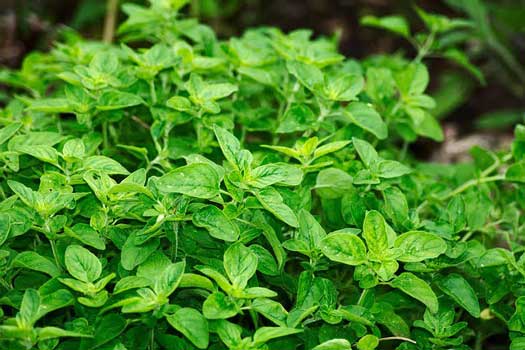
Mint
Nasturtiums and mint can be beneficial companions, with nasturtiums attracting beneficial insects that help protect mint. This combination promotes healthier mint plants.
Benefits:
- Pest Control: Nasturtiums attract insects that prey on mint pests.
- Healthier Plants: Reduced pest pressure results in stronger mint plants.
- Better Growth: Healthier plants lead to more vigorous mint growth.
Considerations:
- Growth Habits: Mint can spread aggressively, so consider using containers or barriers.
- Sunlight: Ensure both plants receive ample sunlight for optimal growth.
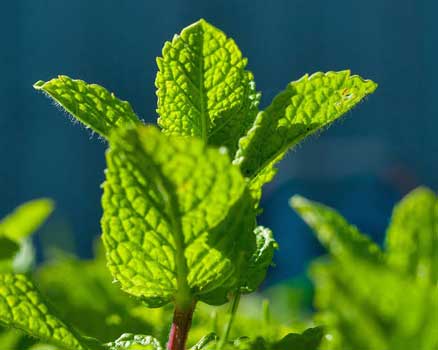
Coriander (Cilantro)
Nasturtiums and coriander (cilantro) are a good match in the garden. Nasturtiums attract beneficial insects and deter pests, helping to protect coriander plants and improve their growth.
Benefits:
- Pest Deterrent: Nasturtiums keep pests away from coriander.
- Healthier Plants: Fewer pests lead to stronger coriander plants.
- Better Flavor: Healthier coriander plants can have better flavor.
Considerations:
- Planting Density: Provide enough space to prevent overcrowding and allow proper air circulation.
- Watering: Both plants need consistent watering, but avoid waterlogging the soil.
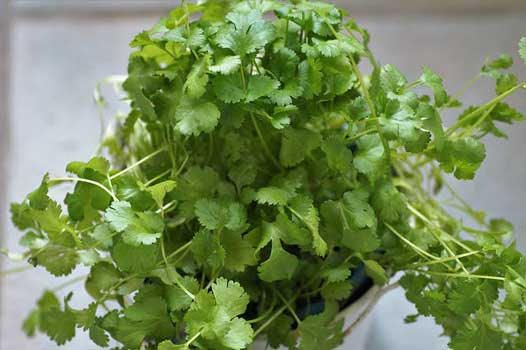
Incorporating nasturtiums into your garden allows you to enjoy healthier plants and better crop yields. Their natural pest-repelling qualities and capacity to attract beneficial insects make them invaluable partners for many vegetables.
Bad Nasturtium companion plants
While nasturtiums are excellent companions for many plants, a few do not pair well with them. Understanding which plants to avoid can help create a healthier and more productive garden. Here are some plants that are not good companions for nasturtiums:
Fennel
Fennel is not a good companion for nasturtiums or most other garden plants. It tends to inhibit the growth of nearby plants due to its allelopathic properties.
Considerations:
- Allelopathic Effects: Fennel releases chemicals that can stunt the growth of nasturtiums.
- Growth Inhibition: Avoid planting fennels near companion plants to prevent growth issues.
Kohlrabi
Nasturtiums and kohlrabi do not make good companions. Kohlrabi can sometimes hinder the growth of nasturtiums, leading to less vibrant plants.
Considerations:
- Growth Competition: Kohlrabi may compete for resources, impacting nasturtiums’ growth.
- Space Needs: Ensure both plants have enough room to grow without interference.
Peppers
Although nasturtiums are suitable for many garden plants, they can sometimes compete with peppers for nutrients and space, impacting both plants’ health.
Considerations:
- Nutrient Competition: Both plants need a lot of nutrients, which can lead to competition.
- Growth Space: Ensure both plants have enough space to grow without competing for resources.
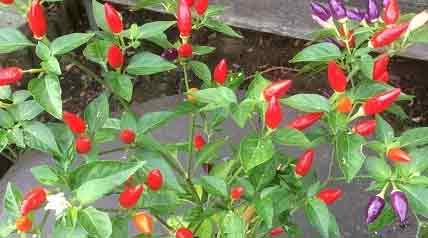
FAQ about Nasturtium Companion Plants
What are companion plants for nasturtiums?
Companion plants for nasturtiums include a variety of vegetables, herbs, and flowers that benefit from being grown alongside nasturtiums. These include tomatoes, cucumbers, squash, radishes, peas, beans, broccoli, cabbage, cauliflower, kale, potatoes, lettuce, spinach, carrots, melons, pumpkins, strawberries, Brussels sprouts, marigolds, basil, oregano, mint, and coriander.
What plants grow well with nasturtiums?
Nasturtiums grow well with many plants, including tomatoes, cucumbers, squash, radishes, peas, beans, broccoli, cabbage, cauliflower, kale, potatoes, lettuce, spinach, carrots, melons, pumpkins, strawberries, Brussels sprouts, marigolds, basil, oregano, mint, and coriander. These plants benefit from nasturtiums’ ability to repel pests and attract beneficial insects.
Where to plant nasturtium companion plants?
Plant nasturtiums companion plants in a sunny location with well-draining soil. Space them appropriately to ensure each plant has enough room to grow. Nasturtiums can be planted along borders, in vegetable beds, or interspersed among other crops to maximize their beneficial effects.
What should you not plant next to nasturtiums?
Avoid planting fennel and kohlrabi next to nasturtiums. These plants may compete for nutrients and space, potentially hindering each other’s growth.
Are nasturtiums good companion plants?
Yes, nasturtiums are excellent companion plants. They naturally repel many harmful insects, attract beneficial ones, and can improve the growth and flavor of neighboring plants. Their bright flowers also enhance the garden’s beauty.
Are nasturtiums good companion plants for tomatoes?
Yes, nasturtiums are great companion plants for tomatoes. They help repel aphids, whiteflies, and other pests that target tomatoes, leading to healthier plants and better yields.
What are the best companion plants for nasturtiums?
The best companion plants for nasturtiums include tomatoes, cucumbers, squash, radishes, peas, beans, broccoli, cabbage, cauliflower, kale, potatoes, lettuce, spinach, carrots, melons, pumpkins, strawberries, Brussels sprouts, marigolds, basil, oregano, mint, and coriander.
What are companion vegetables for nasturtiums?
Nasturtium companion vegetables include tomatoes, cucumbers, squash, radishes, peas, beans, broccoli, cabbage, cauliflower, kale, potatoes, lettuce, spinach, carrots, melons, pumpkins, and Brussels sprouts. These vegetables benefit from nasturtiums’ pest-repelling and pollinator-attracting properties.
What are good companion plants for nasturtiums?
Good companion plants for nasturtiums include tomatoes, cucumbers, squash, radishes, peas, beans, broccoli, cabbage, cauliflower, kale, potatoes, lettuce, spinach, carrots, melons, pumpkins, strawberries, Brussels sprouts, marigolds, basil, oregano, mint, and coriander. These plants thrive alongside nasturtiums, benefiting from their natural pest control and growth enhancement.
Where to plant nasturtium in vegetable garden?
Plant nasturtiums in a sunny location within your vegetable garden, ideally near plants that benefit from pest control, such as tomatoes, cucumbers, squash, and beans. Ensure the soil is well-draining and leave adequate space for nasturtiums and their companion plants to grow. Nasturtiums can be planted along garden borders, between rows, or at the base of taller plants.
What flowers to plant with nasturtiums?
Plant flowers like marigolds, calendula, and borage with nasturtiums. These flowers complement nasturtiums by attracting beneficial insects and deterring pests, creating a healthier garden environment. Their vivid colors also boost the visual appeal of your garden.
What to plant with nasturtiums in hanging basket?
Plant nasturtiums in a hanging basket with other trailing or compact plants, such as lobelia, petunias, and alyssum. These plants thrive in similar conditions and create a beautiful cascading effect. Make sure the basket receives plenty of sunlight and is watered regularly.
What are nasturtium benefits in garden?
Nasturtiums provide numerous benefits in the garden, including:
- Pest Control: They repel aphids, whiteflies, squash bugs, and other pests.
- Beneficial Insects: They attract pollinators and other beneficial insects.
- Soil Health: Nasturtiums can improve soil health by adding organic matter when decomposing.
- Companion Planting: They enhance the growth and flavor of neighboring plants.
- Aesthetic Appeal: Their vibrant flowers add beauty to the garden.
How do you care for nasturtiums?
Nasturtium care is easy:
- Sunlight: Plant them in full sun to partial shade.
- Soil: Use well-draining soil; they are not fussy about soil fertility.
- Watering: Water them regularly, but avoid waterlogged conditions. They are fairly drought-tolerant once established.
- Pruning: Deadhead spent flowers to encourage more blooms.
- Fertilizing: Avoid heavy fertilization, leading to more foliage and fewer flowers.
- Pests and Diseases: Nasturtiums are generally pest-resistant, but watch for aphids and caterpillars. Treat infestations with insecticidal soap if needed.
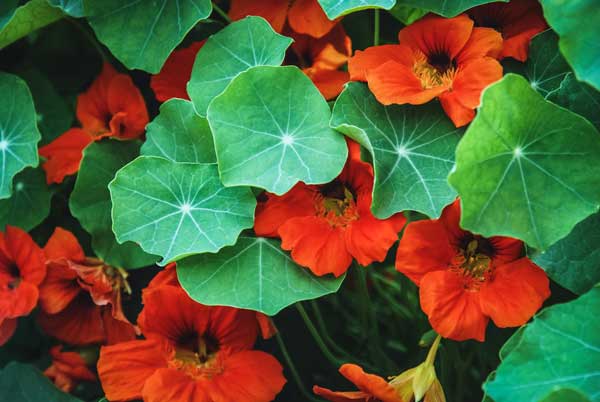
Conclusion Nasturtium Companion Plants
In conclusion, nasturtium companion plants are a valuable addition to any garden. These vibrant and versatile Flowers enhance your garden’s beauty and offer numerous benefits to nearby plants. Nasturtiums promote healthier and more productive gardens by repelling harmful pests and attracting beneficial insects. They pair well with various vegetables, herbs, and flowers, making them essential to a successful companion planting strategy.
Plant nasturtiums alongside your tomatoes, cucumbers, beans, and other garden favorites to see their positive impact. Nasturtium companion plants are low maintenance and hardy in nature, making them easy to care for, even for beginner gardeners. Embrace the advantages of nasturtium companion plants and enjoy a thriving, beautiful, and bountiful garden.

